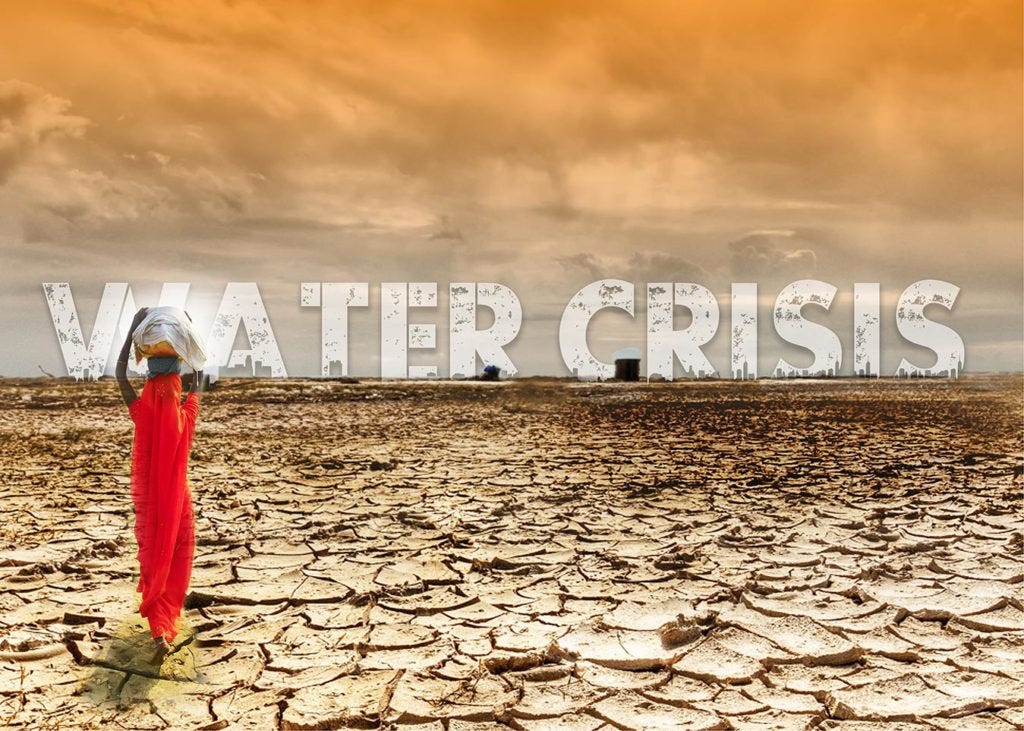What Is Day Zero
In early 2018, the city of Cape Town, South Africa, made global headlines with a phrase most of the world had never heard before: Day Zero.
In early 2018, the city of Cape Town, South Africa, made global headlines with a phrase most of the world had never heard before:
Day Zero.
It was a real date when a major city of 4 million people would run out of municipal water.
“Day Zero” is the term used to describe the moment when a city or region’s water supply drops so low that the central water system is shut off—and taps stop running.
No water from your faucet. No flushing toilets.
No showers. No firefighting infrastructure.
No hospital sanitation.
Instead, residents are forced to line up for daily water rations, often no more than 6 to 13 gallons per person per day, distributed at military-guarded collection points.
Cape Town came within days of this scenario in 2018. It was narrowly averted through massive water restrictions, emergency infrastructure, and a sharp shift in behavior. But the phrase stuck—and became a warning for the rest of the world.
Day Zero Isn’t Just Cape Town’s Problem
Since then, cities like Chennai (India), São Paulo (Brazil), and parts of the U.S. Southwest have all come dangerously close to Day Zero conditions. As climate change accelerates droughts, and mismanagement depletes water sources, more places are at risk.
Here’s why it’s getting worse:
Overdevelopment: Cities grow faster than their water infrastructure can handle.
Agricultural demand: Farming consumes up to 70% of fresh water in many regions.
Pollution & privatization: Contamination and corporate control of resources reduce access.
Climate chaos: Rainfall becomes erratic, reservoirs shrink, and aquifers run dry.
Why You Should Care (Even If You’re Not Thirsty Today)
Water is the foundation of life. Without it, public health collapses, economies stall, and civil unrest explodes. Water scarcity is already a major driver of migration, conflict, and inequality.
In the U.S., we’ve seen this with:
Jackson, Mississippi — where infrastructure failures left thousands without water.
Arizona & Nevada — where the Colorado River is drying up at historic rates.
California — where groundwater depletion is forcing farms to shut down.
Don’t forget Flint, Michigan…Flint, Michigan experienced unsafe drinking water conditions for approximately 7 years, from April 2014 to early 2021, with the full resolution only coming into effect by mid-2025.
You read that correctly, FLINT GOT SAFE DRINKING WATER IN MAY 2025.
Let’s be clear: Day Zero doesn’t happen because we run out of water entirely.
It happens because systems fail—politically, logistically, and morally.
We have enough water. We just don’t manage it like we do.
And we don’t protect it like our lives depend on it.
What Can Be Done
Invest in infrastructure: Pipes, recycling systems, and leak detection.
Rethink agriculture: Shift away from water-intensive crops and practices.
Hold corporations accountable: Limit extraction and pollution by private water bottlers and industries.
Educate and conserve: Build cultures of water stewardship, not waste.
Day Zero is not a date on a calendar, but it is a day that can come if we don’t act responsibly.
If we act now, we can push it back.
If we don’t, it’s just a matter of time.
Dream Big, Act Bigger.






